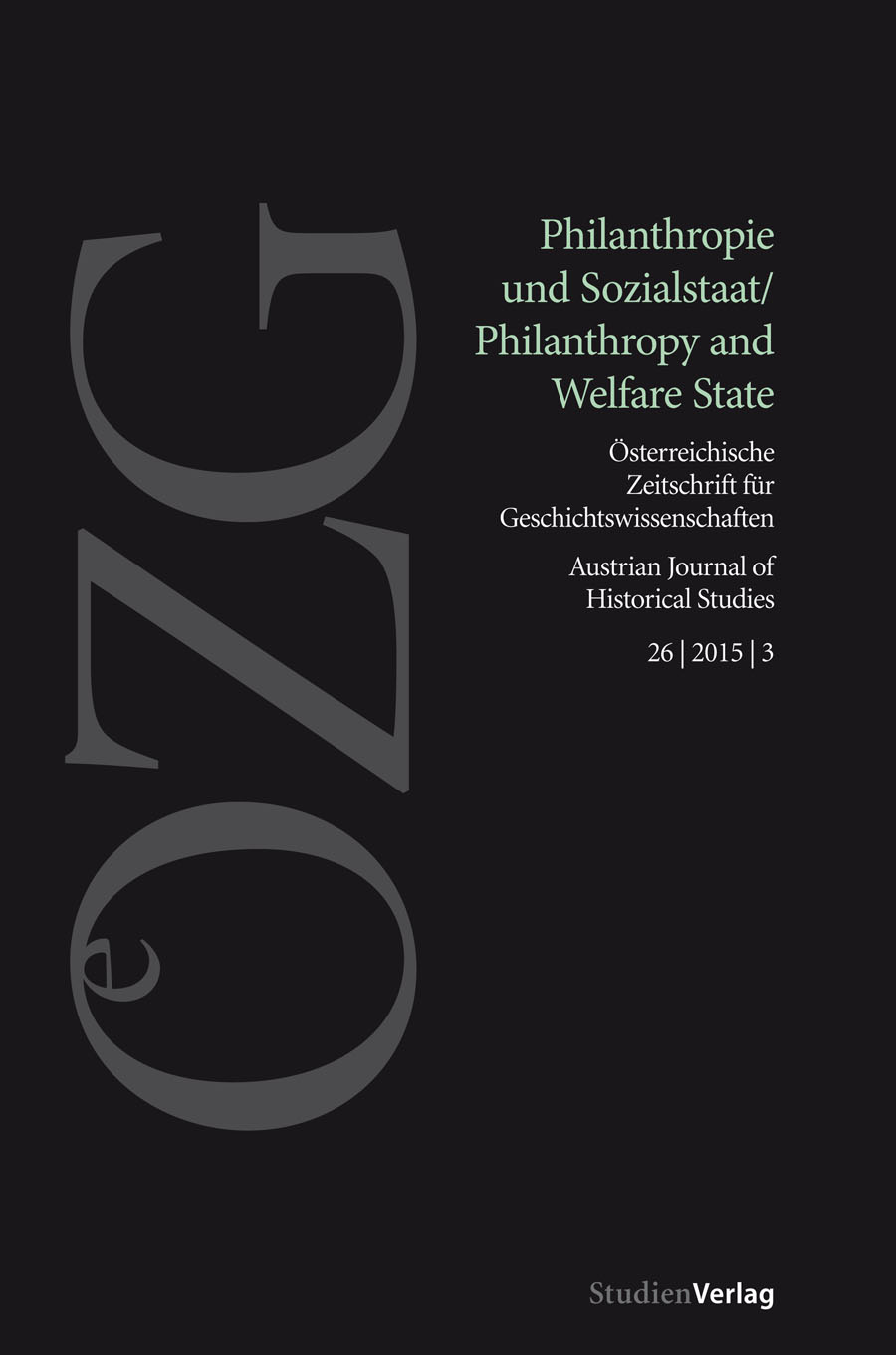Strategien der Existenzsicherung
Die Philanthropie in einer mixed economy of welfare im frühen 20. Jahrhundert
DOI:
https://doi.org/10.25365/oezg-2015-26-3-4Schlagworte:
poor relief, philanthropy, Swiss welfare state, mixed economy of welfare, case studyAbstract
Since the late 19th century different social actors have played an important role in providing social security in Switzerland. Cooperatives, philanthropic organisations, social insurances, and the poor relief of the communes were all part of a “mixed economy of welfare”. This article examines how the different actors in this “mixed economy” worked together, and asks what forms of help they supplied. It raises the question of whether a dichotomy between public and private forms of relief can be traced in the Swiss case. Did democratically legitimised processes of redistribution shape the social security system? Or was social security rather funded by private relief programs? The author argues that in the early 20th century, a complex public-private mix structured the Swiss welfare state and the poor often depended on both public and private funding. In this system, financially potent philanthropic organisations successfully contested the legal power of public actors.


